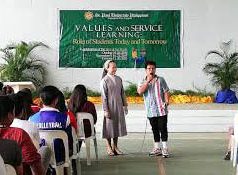আপুনি যদি ‘শংকৰদেৱ‘ ( Sankardev Essay in Assamese) শিৰোনামত এখন ৰচনা বিচাৰি আছে, আৰু ইয়াৰ বিষয়ে সবিশেষ জানিব বিচাৰিছে, তেন্তে এইখন ৰচনা আপোনাৰ বাবে। এই নিবন্ধখন ছাত্ৰ-ছাত্ৰী তথা সাধাৰণ পাঠকসমাজে সহজতে আয়ত্ব কৰিব পৰাকৈ সৰল ভাষাত লিখা হৈছে। ।
শংকৰদেৱ । Sankardev Essay in Assamese
(ৰচনা ১)
শ্ৰীমন্ত শংকৰদেৱ (১৪৪৯- ১৫৬৮)) নৱবৈষ্ণৱ ধৰ্মৰ প্ৰৱৰ্তক, সমাজ সংস্কাৰক আৰু এজন মহান সাহিত্যিক। তেওঁৰ জন্ম হয় অসমৰ নগাওঁ জিলাৰ বৰদোৱাৰ আলিপুখুৰী নামে ঠাইত। তেওঁৰ পিতৃৰ নাম কুসুম্বৰ শিৰোমণি ভূঞা আৰু মাকৰ নাম আছিল সত্যসন্ধ্যা। সৰুতে মাক-দেউতাক ঢুকুৱাত আইতা খেৰসুতিয়ে শংকৰদেৱক তুলি-তালি ডাঙৰ -দীঘল কৰে।
আইতা খেৰসুতিয়ে শিশু শংকৰদেৱক বাৰ বছৰ বয়সত মহেন্দ্ৰ কন্দলি নামৰ এজন পণ্ডিতৰ টোলত ভৰ্তি কৰি দিয়ে। অতি কম সময়ৰ ভিতৰতে তেওঁ সংস্কৃত শাস্ত্ৰত পাৰ্গত হৈ উঠে।
একৈশ বছৰ বয়সত তেওঁ সূৰ্যৱতীক বিয়া কৰায় আৰু তিনি বছৰ পিছত এটি কন্যা সন্তানৰ জন্ম দি সূৰ্যাৱতী স্বৰ্গগামী হয়। পত্নী বিয়োগ হোৱাত তেওঁৰ মন ভাগি পৰে আৰু সংসাৰ বিৰাগী হৈ ১৪৮১ চনত ১৭ জন সঙ্গীৰ সৈতে তীৰ্থ ভ্ৰমণ কৰিবলৈ ওলায়। এই ভ্ৰমণ কালত তেওঁ উত্তৰ ভাৰতৰ প্ৰায়বোৰ তীৰ্থস্থান পৰিদৰ্শন কৰে আৰু সেই সময়ৰ হিন্দু ধৰ্মৰ বহুতো ধৰ্ম গুৰুৰ সৈতে মত বিনিময় কৰি আধ্যাত্মিক জ্ঞানত পুষ্ঠ হৈ বাৰ বছৰ পিছত অসমলৈ উভতি আহে। ঘৰলৈ উভতি আহি কালিন্দী নামৰ ছোৱালী এগৰাকীক বিয়া কৰায়।
সেই সময়ত অসমত সামাজিক আৰু ধৰ্মীয় জীৱনত নানান খেলিমেলি দেখি হিন্দু ধৰ্ম সংস্কাৰ কৰাৰ মানসেৰে শ্ৰীমদ্বভাগৱত গীতাৰ ভিত্তিত এক নতুন ধৰ্মমতৰ পাতনি মেলে। এই ধৰ্মক ‘ নৱবৈষ্ণৱ ধৰ্ম’ বুলি কোৱা হয়। লগে লগে তেওঁ তেওঁৰ ধৰ্ম মত প্ৰচাৰৰ মাধ্যম হিচােপ সাহিত্য ৰচনা আৰম্ভ কৰে।
১৫২২ চনত তেওঁ ধূঞাহাটৰ বেলগুৰিত মাধবদেৱক লগ পায়। শ্ৰীশংকৰদেৱৰ লগত মাধবদেৱ শাস্ত্ৰীয় তৰ্কত পৰাজিত হৈ শংকৰদেৱৰ শিষ্যত্ব গ্ৰহণ কৰে আৰু আজীৱন গুৰু শংকৰদেৱৰ লগত থাকি ধৰ্ম প্ৰচাৰত মনোনিেবশ কৰে। শংকৰদেৱ আৰু মাধৱদেৱৰ এই মিলনক ‘মণি-কাঞ্চন সংযোগ’ বুলি কোৱা হয়। শংকৰদেৱে ধৰ্ম প্ৰচাৰৰ অৰ্থে ঠায়ে ঠায়ে সত্ৰ, থান, নামঘৰ, ভাওনাঘৰ আদি স্থাপন কৰে আৰু অসমীয়া সমাজক খোল, তাল, ডবা আদিৰ ব্যৱহাৰ শিকায়। ‘এক দেৱ, এক সেৱ, এক বিনে নাই কেৱ’ – হৈছে তেওঁৰ ধৰ্মৰ মূলমন্ত্ৰ।
শংকৰদেৱে তেওঁৰ ধৰ্মীয় তত্ত্ব সৰ্বসাধাৰণৰ মাজত প্ৰচাৰ কৰাৰ মাধ্যম হিচােপ বহুতো গ্ৰন্থও ৰচনা কৰে। তেওঁৰ ৰচনাসমূহ তলত দিয়া ধৰণে ভাগ কৰিব পাৰি।
কাব্য: হৰিচন্দ্ৰ উপাখ্যান, ৰুক্মিণীহৰণ কাব্য, বলিছলন, অমৃত মন্থন, গজেন্দ্ৰ উপাখ্যান, অজামিল উপাখ্যান, কুৰুক্ষেত্ৰ আদি।
ভক্তিমূলক পুথি: ভক্তি প্ৰদীপ, নিমি-নৱসিদ্ধ সংবাদ, ভক্তি ৰত্নাকৰ, অনাদি পতন আদি।
নাম প্ৰসঙ্গমূলক: কীৰ্তন ঘোষা, গুণমালা আদি।
অনুবাদমূলক: ভাগৱত, আৰু উত্তৰাকাণ্ড ৰামায়ণ।
অংকীয়া নাট: পত্নী প্ৰসাদ, কালিয় দমন, কেলি গোপাল, ৰুক্মিণী হৰণ, পাৰিজাত হৰণ আৰু ৰামজিয়।
গীত: বৰগীত,ভটিমা।
শ্ৰীমন্ত শংকৰদেৱৰ ‘কীৰ্তন ঘোষা’ নামৰ পুথিখন হৈছে তেওঁৰ সাহিত্যিক কীৰ্তি স্তম্ভ স্বৰূপ। এইখন গ্ৰন্থখনক নৱবৈষ্ণৱ ধৰ্মৰ পৱিত্ৰ পুথি বুলি গণ্য কৰা হয়। শংকৰেদেৱে ব্রজাৱলী নামৰ এক কৃত্ৰিম ভাষাত তেওঁৰ গ্ৰন্থেবাৰ ৰচনা কৰিছিল। ব্রজাৱলী ভাষাৰ মূল ভেটি হৈছে মৈথেলী। তাৰ লগত ভোজপুৰী, নেৱাৰী আৰু কাষৰীয়া অঞ্চলৰ আন আন ভাষাৰ সংমিশ্ৰণেৰে ই ঠাই বিশেষে একোটা স্বতন্ত্ৰ ৰূপ লাভ কৰে। এই ভাষাত স্বৰধবনিৰ প্ৰয়োগ অধিক বাবে শ্ৰুতি মধুৰ। মহাপুৰুষ শ্ৰীমন্ত শংকৰদেৱে তেওঁৰ সৰহভাগ ৰচনাত ব্রজাৱলী ভাষাৰ ব্যৱহাৰ কৰিছে। শংকৰদেৱৰ সকলোবোৰ গ্ৰন্থ ব্রজাৱলী ভাষাত ৰচনা কৰা যদিও তেওঁৰ একমাত্ৰ পুথি ‘ভক্তি ৰত্নাকৰ’ খন সংস্কৃত ভাষাত ৰচিত।
শংকৰদেৱে অসমীয়া জাতীয় জীৱনলৈ অকল এক নতুন ধৰ্ম দি যোৱাই নহয়, তেওঁ অসমীয়া সমাজ সংস্কৃতিলৈয়ো নানান অৱদান আগবঢ়াই অসমীয়া জাতিক এক স্বকীয়তা প্ৰদান কৰি গৈছে।
এইজন মহাপুৰুষে ১৫৬৮ চনত এশ ঊনৈশ বছৰ বয়সত কোচ বিহাৰৰ ভেলা মধুপুৰ সত্ৰত ইহলীলা সম্বৰণ কৰে। 0 0 0
শ্ৰীমন্ত শংকৰদেৱ
(ৰচনা ২)
জন্ম আৰু পিতৃ-মাতৃ
শ্ৰীমন্ত শংকৰদেৱৰ জন্ম ১৪৪৯ চনত হৈছিল। তেওঁৰ জন্মস্থান হৈছে বৰদোৱা, নগাঁও জিলাত। তেওঁৰ পিতৃৰ নাম কুসুম্বৰ ভূঞা আৰু মাকৰ নাম সত্যসন্ধা।
শৈশৱ আৰু শিক্ষা
তেওঁৰ শৈশৱত মাক-দেউতাকৰ মৃত্যু হৈছিল। তেওঁক আইতা খেৰসুতিয়ে লালন-পালন কৰিছিল। শংকৰদেৱৰ পঢ়াৰ প্ৰতি বিশেষ ধাউতি নাছিল। তেওঁ খেল-ধেমালিত ব্যস্ত আছিল। ১২ বছৰ বয়সত তেওঁ মহেন্দ্ৰ কন্দলিৰ টোলত পঢ়িবলৈ গৈছিল। শংকৰদেৱে অতি কম সময়তে বিদ্যা আর্জন কৰিছিল।
বৈবাহিক জীৱন
শংকৰদেৱৰ প্ৰথম পত্নীৰ নাম সুৰ্য্যৱতী আছিল। তেওঁৰ দ্বিতীয় পত্নীৰ নাম কলিন্দা আছিল। শংকৰদেৱৰ সন্তান আছিল।
ধৰ্ম প্ৰচাৰ
শংকৰদেৱে নৱবৈষ্ণৱ ধৰ্ম প্ৰচাৰ কৰিছিল। তেওঁ এক শৰণ নাম ধৰ্মৰ প্ৰচাৰ কৰিছিল। শংকৰদেৱৰ ধৰ্ম প্ৰচাৰে অসমত এক নতুন ধৰ্মীয় চেতনা আনিছিল।
সাহিত্য আৰু সংস্কৃতি
শংকৰদেৱ এজন মহান সাহিত্যিক আছিল। তেওঁ বহু গ্ৰন্থ ৰচনা কৰিছিল। তেওঁৰ কীৰ্তন ঘোষা, নামঘোষা, বৰগীত আদি বিখ্যাত। শংকৰদেৱে অঙ্কীয়া নাটৰ সৃষ্টি কৰিছিল। তেওঁ চিত্ৰকলা আৰু সংগীততো পাৰ্গত আছিল।
সমাজ সংস্কাৰ
তেওঁৰ এজন সমাজ সংস্কাৰক আছিল। তেওঁ সমাজত ভেদাভেদ দূৰ কৰিবলৈ চেষ্টা কৰিছিল। শংকৰদেৱৰ প্ৰচাৰে অসমত এক নতুন সমাজিক চেতনা আহিছিল।
মৃত্যু
তেওঁৰ মৃত্যু ১৫৬৮ চনত হৈছিল। তেওঁৰ মৃত্যুস্থান হৈছে মধুপুৰ সত্ৰ, কোচবিহাৰ।
উপসংহাৰ
শ্ৰীমন্ত শংকৰদেৱ এজন মহান ব্যক্তিত্ব আছিল। তেওঁ অসমীয়া সমাজ, সাহিত্য, সংস্কৃতি আৰু ধৰ্মত এক নতুন যুগৰ সূচনা কৰিছিল। শংকৰদেৱৰ অৱদান অসমীয়া জাতিৰ বাবে অমূল্য। 0 0 0
শ্ৰীমন্ত শংকৰদেৱৰ বিষয়ে কিছু তথ্য
- জন্ম: তেওঁৰ জন্ম ১৪৪৯ চনত বৰদোৱা, নগাঁও জিলাত হৈছিল2।
- পিতৃ-মাতৃ: তেওঁৰ পিতৃৰ নাম কুসুম্বৰ ভূঞা আৰু মাকৰ নাম সত্যসন্ধা।
- শৈশৱ: শংকৰদেৱৰ শৈশৱত মাক-দেউতাকৰ মৃত্যু হৈছিল। তেওঁক আইতা খেৰসুতিয়ে লালন-পালন কৰিছিল।
- শিক্ষা: শংকৰদেৱে মহেন্দ্ৰ কন্দলিৰ টোলত শিক্ষা লাভ কৰিছিল।
- ধৰ্ম প্ৰচাৰ: শংকৰদেৱে নৱবৈষ্ণৱ ধৰ্ম প্ৰচাৰ কৰিছিল। তেওঁ এক শৰণ নাম ধৰ্মৰ প্ৰচাৰ কৰিছিল।
- সাহিত্য: শংকৰদেৱে কীৰ্তন ঘোষা, নামঘোষা, বৰগীত আদি গ্ৰন্থ ৰচনা কৰিছিল।
- সংস্কৃতি: শংকৰদেৱে অঙ্কীয়া নাটৰ সৃষ্টি কৰিছিল আৰু চিত্ৰকলা আৰু সংগীততো পাৰ্গত আছিল।
- মৃত্যু: তেওঁৰমৃত্যু ১৫৬৮ চনত মধুপুৰ সত্ৰ, কোচবিহাৰত হৈছিল। 0 0 0
শ্ৰীমন্ত শংকৰদেৱৰ বিষয়ে কিছু প্ৰশ্ন আৰু উত্তৰ
প্ৰশ্ন ১: শ্ৰীমন্ত শংকৰদেৱৰ জন্ম কেতিয়া হৈছিল?
উত্তৰ: শ্ৰীমন্ত শংকৰদেৱৰ জন্ম ১৪৪৯ চনত বৰদোৱা, নগাঁও জিলাত হৈছিল।
প্ৰশ্ন ২: তেওঁৰ পিতৃ-মাতৃৰ নাম কি?
উত্তৰ: তেওঁৰ পিতৃৰ নাম কুসুম্বৰ ভূঞা আৰু মাকৰ নাম সত্যসন্ধা।
প্ৰশ্ন ৩: শংকৰদেৱৰ শৈশৱ কিদৰে পাৰ হৈছিল?
উত্তৰ: তেওঁৰ শৈশৱত মাক-দেউতাকৰ মৃত্যু হৈছিল। তেওঁক আইতা খেৰসুতিয়ে লালন-পালন কৰিছিল।
প্ৰশ্ন ৪: শংকৰদেৱে কোন টোলত শিক্ষা লাভ কৰিছিল?
উত্তৰ: শংকৰদেৱে মহেন্দ্ৰ কন্দলিৰ টোলত শিক্ষা লাভ কৰিছিল।
প্ৰশ্ন ৫: শংকৰদেৱে কোন ধৰ্ম প্ৰচাৰ কৰিছিল?
উত্তৰ: শংকৰদেৱে নৱবৈষ্ণৱ ধৰ্ম প্ৰচাৰ কৰিছিল। তেওঁ এক শৰণ নাম ধৰ্মৰ প্ৰচাৰ কৰিছিল।
প্ৰশ্ন ৬: শংকৰদেৱৰ বিখ্যাত গ্ৰন্থসমূহ কি কি?
উত্তৰ: তেওঁৰ বিখ্যাত গ্ৰন্থসমূহ হৈছে কীৰ্তন ঘোষা, নামঘোষা, আৰু বৰগীত।
প্ৰশ্ন ৭: তেওঁৰ মৃত্যু কেতিয়া হৈছিল?
উত্তৰ: তেওঁৰ মৃত্যু ১৫৬৮ চনত মধুপুৰ সত্ৰ, কোচবিহাৰত হৈছিল।
Sri Sankardeva: The Architect of Neo-Vaishnavism in Assam
(Essay in English-1)
Sri Sankardeva, a towering figure in Assamese culture and religion, is revered as the founder of Neo-Vaishnavism in Assam. His contributions to the intellectual, spiritual, and artistic landscape of the region have had a profound and enduring impact. This essay will delve into the life, teachings, and legacy of this eminent saint.
Born in 1449 in the village of Nilachal, Assam, Sankardeva was a child prodigy, displaying exceptional intelligence and a deep spiritual inclination from a young age. He was initially drawn to the Tantric traditions prevalent in Assam, but later became disillusioned with their ritualism and sought a more authentic path to spiritual liberation.
Sankardeva’s journey led him to the teachings of the Bhagavata Purana, a Hindu scripture that narrates the life and deeds of Lord Krishna. Inspired by the divine love and devotion depicted in the Purana, he embarked on a mission to revive and propagate the Bhakti movement in Assam. Sankardeva’s teachings emphasized the importance of devotion to Lord Krishna as the ultimate means of salvation. He rejected caste discrimination and promoted equality among all beings, advocating for a society based on love, compassion, and service to others.
To spread his message effectively, Sankardeva established numerous monasteries known as “tol”s. These tol’s served as centers of learning and spiritual practice, attracting disciples from all walks of life. He also composed numerous devotional songs, plays, and religious texts, which continue to be cherished and performed in Assam today.
One of Sankardeva’s most significant contributions was the creation of the Assamese language and literature. Prior to his time, Assamese was primarily a spoken language with limited written literature. Sankardeva, however, used Assamese to compose his religious works, elevating it to the status of a literary language. His writings not only enriched the Assamese language but also helped to preserve the Assamese cultural heritage.
Sankardeva’s legacy extends far beyond Assam. His teachings have influenced the spiritual and cultural traditions of other regions in India and beyond. The Bhakti movement he initiated continues to be a vibrant force in Indian religious life. Sankardeva’s emphasis on love, devotion, and social equality remains relevant today and continues to inspire people of all faiths.
In conclusion, Sri Sankardeva was a visionary who played a pivotal role in shaping the religious, cultural, and literary landscape of Assam. His teachings and contributions have had a lasting impact on the region and continue to be celebrated and revered to this day. Sankardeva’s life and work serve as a testament to the power of faith, devotion, and social justice. 0 0 0
The Life and Legacy of Sri Sankardev: A Beacon of Assamese Culture
(Essay 2)
Who Was Sri Sankardev?
Sri Sankardev, born in 1449 in Assam, India, is a name that resonates with cultural richness and spiritual depth. He wasn’t just a saint or a scholar; he was a transformative figure in Assamese society. His teachings and artistic expressions laid the groundwork for a unique blend of spirituality and culture that continues to thrive today.
The Spiritual Journey of Sri Sankardev
Can you imagine a time when people sought deeper spiritual connections? Sri Sankardev spent years searching for truth and meaning. His quest led him to understand the essence of devotion (bhakti) in a way that was accessible to everyone, regardless of caste or background. He believed that devotion to God could simplify life’s complexities. Isn’t it refreshing to think that spirituality can be a path for everyone?
His Contribution to Literature and Performing Arts
Sankardev wasn’t just about teachings; he was also a master of words and art. He wrote several plays and poems, with “Kirtan Ghoxa” being one of the most famous. These writings enriched Assamese literature and introduced a new form of storytelling through music and drama. Imagine the excitement of watching a play that teaches values while entertaining you! His work is a perfect blend of education and enjoyment, making complex ideas easy to grasp.
The Dance and Music of Bhakti
Sri Sankardev’s influence is nowhere clearer than in the dance and music that flourished under his guidance. His unique style of music, known as “Borgeet,” offers melodious tunes to express devotion. It’s like listening to a heart’s song. The traditional dance known as “Sattriya” emerged as a vital part of Assamese culture, portraying stories from his teachings. It’s a beautiful sight, watching performers convey deep emotions through movement and rhythm.
The Establishment of Satras
One of the remarkable legacies of Sri Sankardev is the establishment of “Satras.” These are monastic institutions that served as hubs of religious and cultural activities. Think of them as community centers where people come together to learn, pray, and celebrate life. Satras became places of refuge, encouraging people to live in harmony while sharing their faith.
Sri Sankardev’s Impact on Assamese Identity
Sankardev’s teachings fostered a sense of unity among the diverse communities in Assam. He emphasized that true faith transcends boundaries, connecting people through shared values and respect. This approach helped shape a unique Assamese identity that celebrates diversity and inclusion.
The Continuing Legacy
Even today, Sri Sankardev’s influence is apparent in various aspects of Assamese life, from festivals to educational practices. His teachings still inspire countless individuals, reminding them to seek purity in heart and action. It’s remarkable how a figure from the 15th century still finds relevance in our modern world.
Conclusion:
Sri Sankardev’s life is an inspiring tale of deep devotion and cultural renaissance. His contributions to literature, performing arts, and community life shaped Assamese society in remarkable ways. As we explore his journey, we find lessons that resonate even today, encouraging us to embrace compassion, unity, and the power of shared cultural heritage. In a world often divided, his teachings remind us of the beauty found in togetherness and faith. 0 0 0
1: অসমীয়া ৱিকিপিডিয়া 2: assamintro.com
শংকৰদেৱ
বি. দ্র. উক্ত ৰচনাটি ৰাব্বি মছৰুৰ ৰচিত ‘অসমীয়া ৰচনা শিক্ষা‘ গ্রন্থৰ অন্তর্গত।
শংকৰদেৱ
ৰাব্বি মছৰুৰ ৰচিত কেইখনমান গ্রন্থ:
- অসমীয়া লেখক পৰিচয়
- বিশ্ব ব্যক্তি পৰিচয়
- অসমীয়া ৰচনা শিক্ষা
- অসমীয়া ভাব সম্প্রসাৰণ
- এক গুচ্ছ জীৱনী
- শিশু পদ্য
- অসমীয়া অনুবাদত বিশ্ব চুটি গল্প
- অসমীয়া অনুবাদত বিশ্ব কবিতা
- অসমীয়া অনুবাদত বিদেশী কবিতা
- পৃথিৱীৰ আৰু মোৰ (কাব্য সংকলন)
- সংহতিৰ ভাড়া ঘৰ ( কাব্য সংকলন)
- মোৰ গীত তোমাৰ সুৰ (গীতি কবিতা সংকলন)
- তুমি কেমন প্রেমিক (বাংলা কাব্য সংকলন)
- তোমাকে বলছি (বাংলা কবিতা সংকলন)
- ফণী শৰ্মাৰ নাটক ‘চিৰাজ’-এক সমালোচনা
- হীৰেন ভট্টাচাৰ্যৰ কবিতা -এক বিশ্লেষণাত্মক অধ্যয়ন
- ইছমাইল হোছেইনৰ কবিতা : এক বৈশিষ্ট্যমূলক আলোচনা
- ইছমাইল হোছেইনৰ কবিতা: এক বিশ্লেষণাত্মক অধ্যয়
- অসমীয়া উপন্যাস সমালোচনা
- অসমীয়া চুটি গল্প সমালোচনা
- মৌলানা আবুল কালাম আজাদ (চমু জীবনী)
- অসমীয়া কবি প্রতিভা (সাহিত্য সমালোচনা)
- নির্বাচিত অসমীয়া কবিতা সমালোচনা
- অসমীয়া ব্যাকৰণ ক অংশ
- অসমীয়া ব্যাকৰণ খ অংশ
- নির্বাচিত অসমীয়া কবিতাৰ মূলভাব
- আৰবী সাহিত্যৰ ইতিহাস:প্রাক-ইসলামী যুগ (৫০০-৬২২ খৃ:)
- আৰবী সাহিত্যৰ ইতিহাস:প্রাথমিক ইসলামী যুগ (৬২২-৬৬১)…
Some Important Books for Students:
- Advertisement Writing
- Amplification Writing
- Note Making
- Paragraph Writing
- Notice Writing
- Passage Comprehension
- The Art of Poster Writing
- The Art of Letter Writing
- Report Writing
- Story Writing
- Substance Writing
- School Essays Part-I
- School Essays Part-II
- School English Grammar Part-I
- School English Grammar Part-II..
অতিৰিক্ত অনুসন্ধান:








[…] শংকৰদেৱ অসমৰ এগৰাকী মহান ব্যক্তি। তেওঁ ধৰ্মপ্ৰৱৰ্তক, সমাজ সংস্কাৰক, কবি, অনুবাদক, সঙ্গীতজ্ঞ, নাট্যকাৰ আৰু চিত্ৰকৰ আছিল। শংকৰদেৱৰ সাহিত্য প্রধানত শ্রীমদ্ভাগৱতৰ ওপৰত আধাৰিত। তেওঁ সংস্কৃত সাহিত্যৰ বিপুল অধ্যয়ন কৰিছিল আৰু থলুৱা মাত কথাৰ ওপৰত গভীৰ জ্ঞান আছিল। […]
[…] শংকৰদেৱ অসমৰ এগৰাকী মহান ব্যক্তি। তেওঁ ধৰ্মপ্ৰৱৰ্তক, সমাজ সংস্কাৰক, কবি, অনুবাদক, সঙ্গীতজ্ঞ, নাট্যকাৰ আৰু চিত্ৰকৰ আছিল। তেখেতে অসমীয়া জাতি গঠন কৰিলে। শংকৰদেৱৰ সাহিত্য প্রধানত শ্রীমদ্ভাগৱতৰ ওপৰত আধাৰিত। তেওঁ সংস্কৃত সাহিত্যৰ বিপুল অধ্যয়ন কৰিছিল আৰু থলুৱা মাত কথাৰ প্ৰতি গভীৰ প্ৰেম আছিল। […]